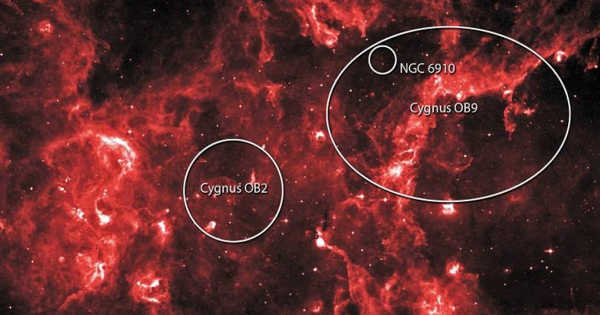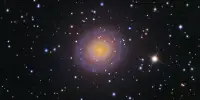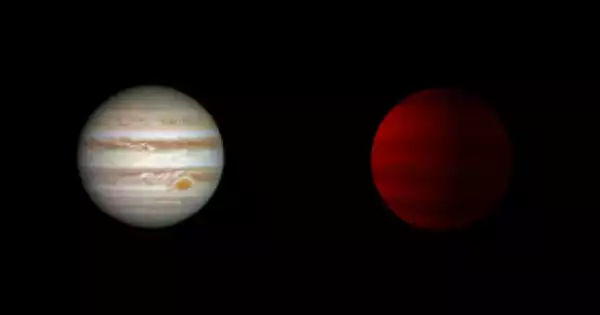Cygnus OB2 is a massive young star cluster in the constellation Cygnus. NML Cygni, one of the largest known stars, is also included. The region is embedded within a larger region of star formation known as Cygnus X, which is one of the brightest objects in the sky at radio wavelengths. The region is located in the constellation of Cygnus, approximately 1,570 parsecs from Earth.
The cluster is an OB group. It contains some of the most massive and luminous stars known to science. Cyg OB2 #12 is an example of a suspected luminous blue variable. NML Cygni, one of the largest known stars, is also part of the cluster.
Cygnus OB2 is a star cluster in the Milky Way that contains many hot, massive young stars. A deep Chandra observation of Cygnus OB2 has found almost 1,500 stars emitting X-rays.
The region is located within an even larger area of star formation known as ‘Cygnus X.’ At radio wavelengths, this is one of the most luminous objects in the sky. The region is approximately 1,400 parsecs distant from us. The young cluster is one of the largest known, as well as the largest in the northern hemisphere, with some authors previously classifying it as a young globular cluster similar to those found in the Large Magellanic Cloud. However, it is now regarded as a massive, low-density stellar association.
Despite its size, Cygnus OB2 is obscured by the Cygnus Rift, a massive dust cloud. Many of the stars are obscured by this. As a result, despite its size, it is difficult to see in detail. The estimated number of massive stars of spectral type O ranges from 50 to 100. It has a total mass of (4–10)×104 or 3×104 solar masses.

Despite being more than ten times the size of the Orion Nebula, which can be seen with the naked eye, Cygnus OB2 is hidden behind a massive dust cloud known as the Cygnus Rift, which obscures many of the stars in it. This means that, despite its large size, determining its actual properties is difficult.
Despite this, recent surveys ranging from radio to X-ray wavelengths have observed the region to great depths in order to gain a better understanding of how star and planet formation processes occur on such a large scale. Observations with the Chandra X-ray Observatory, Spitzer Space Telescope, Herschel Space Observatory, and Gran Telescopio Canarias are part of these studies.
Stars come in a variety of sizes and masses. Our Sun is a medium-sized star with a lifespan of about 10 billion years. More massive stars, such as those found in Cygnus OB2, have a lifespan of only a few million years. Throughout their lives, they release massive amounts of high-energy winds into their surroundings. These violent winds can collide or cause shocks in the gas and dust surrounding the stars, depositing large amounts of energy and emitting X-rays that Chandra can detect.
Information Source:
















